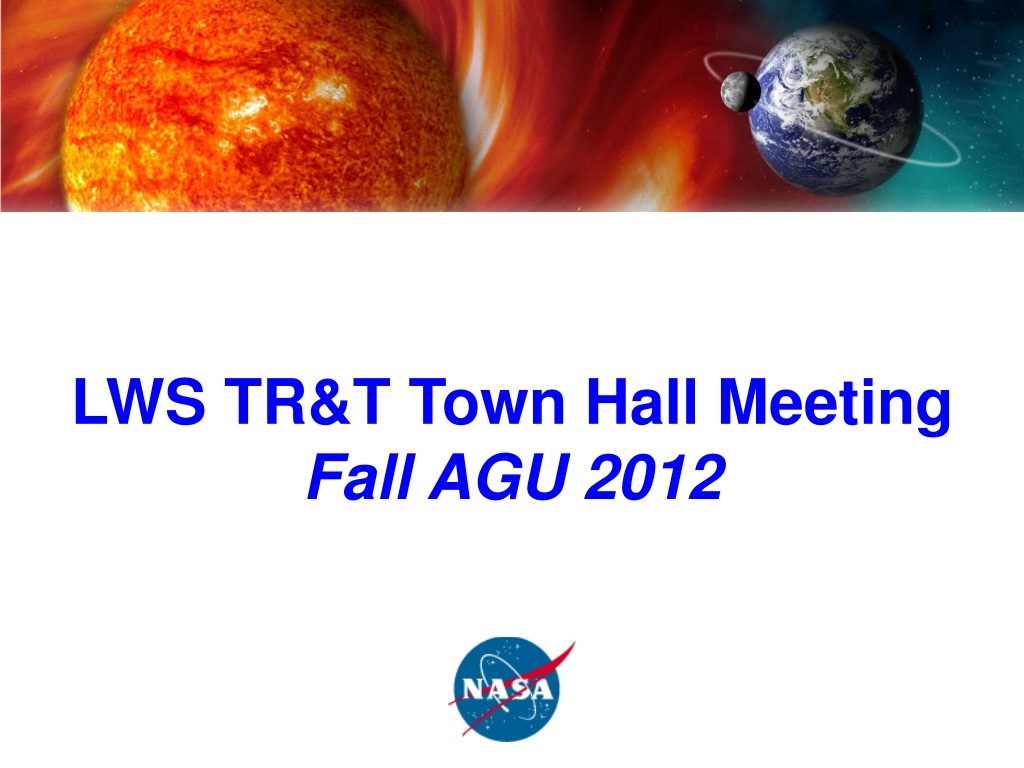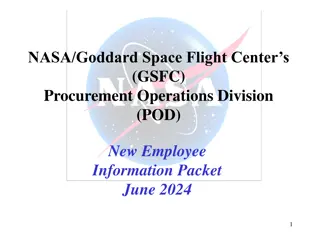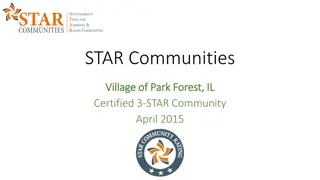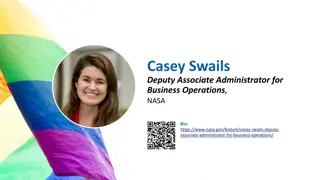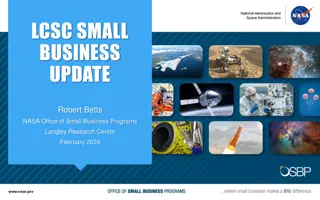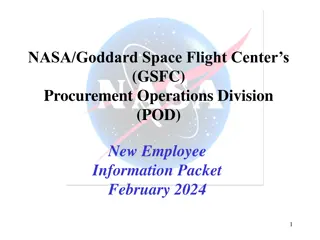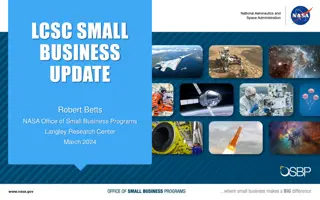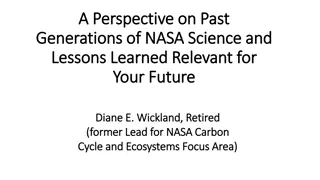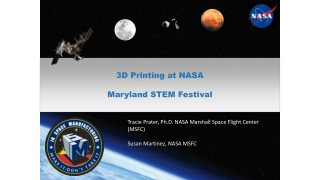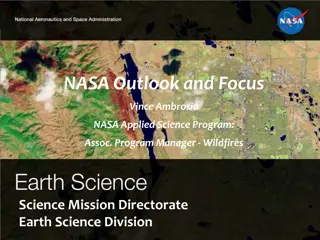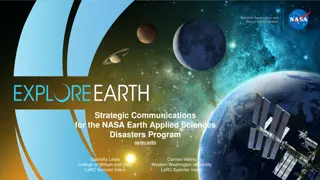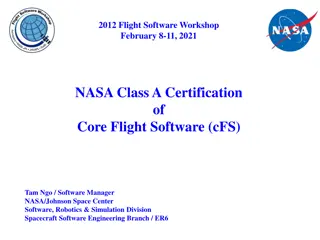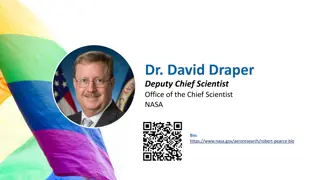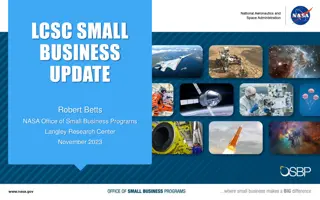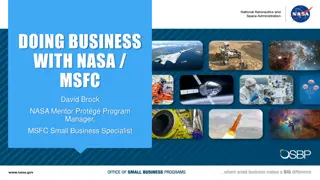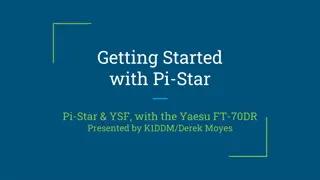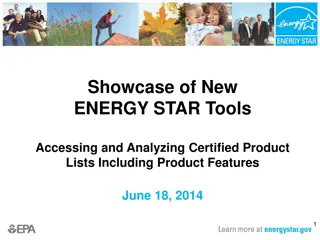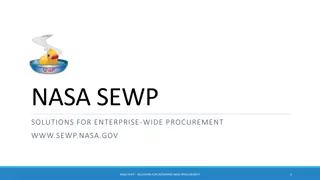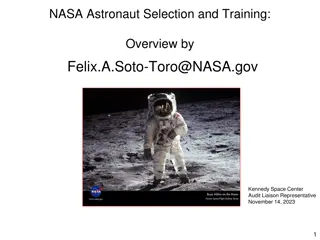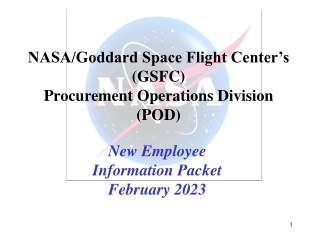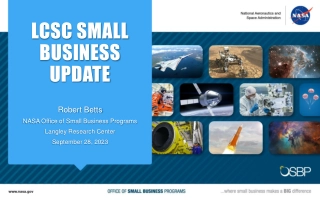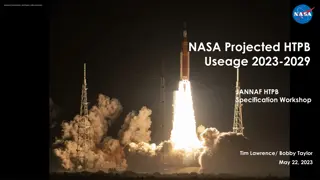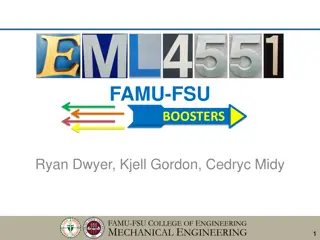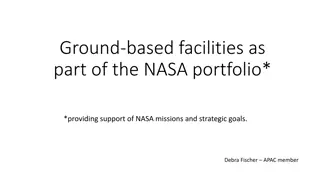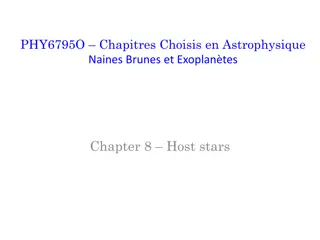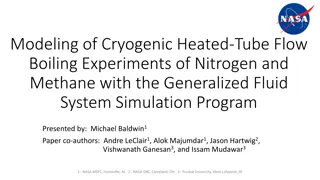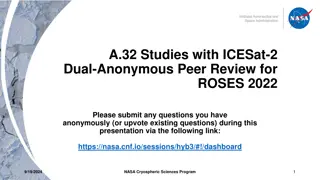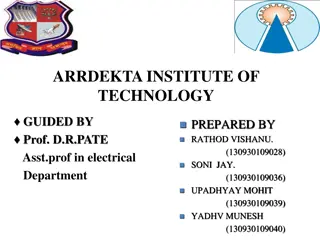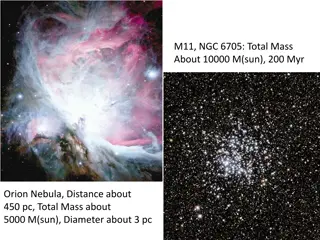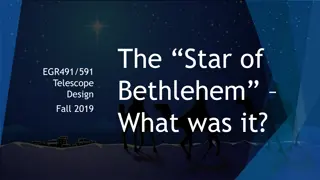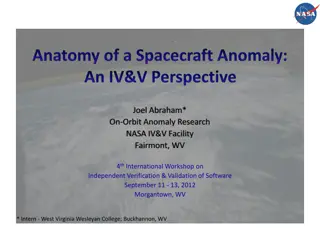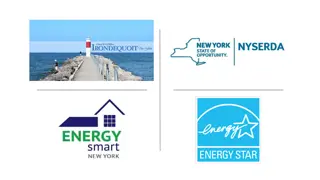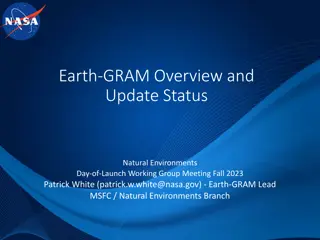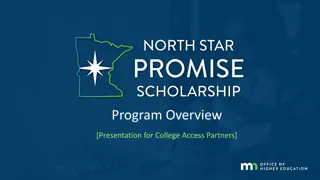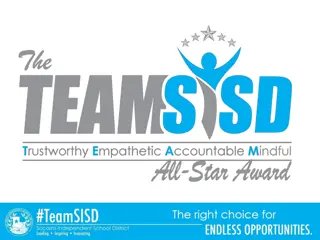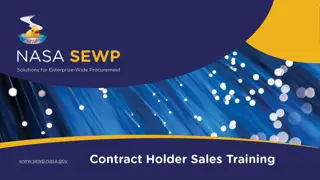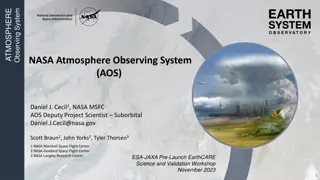NASA Living with a Star Program Research Overview
Detailed overview of the NASA Living with a Star Program's Targeted Research & Technology Steering Committee Meeting in Fall AGU 2012, discussing program status, new awardees, focus areas, workshops, proposals and awards, partnerships, and separate presentations for various topics related to space weather modeling and solar variability research.
Download Presentation

Please find below an Image/Link to download the presentation.
The content on the website is provided AS IS for your information and personal use only. It may not be sold, licensed, or shared on other websites without obtaining consent from the author. Download presentation by click this link. If you encounter any issues during the download, it is possible that the publisher has removed the file from their server.
E N D
Presentation Transcript
NASA Living with a Star Program Targeted Research & Technology Steering Committee LWS TR&T Town Hall Meeting Fall AGU 2012
AGENDA NASA Living with a Star Program Targeted Research & Technology Steering Committee 1) Brief summary of LWS TR&T Program Status, new awardees Lika Guhathakurta, Bob Leamon 2) Comments on current Focus Team and activitiesTeam representatives 3) NRC The Effects of Solar Variability on Earth s Climate workshop Lika, Peter Pilewskie 4) Assessment of 10 years of LWS Glenn Mason 5) ROSES 13 Bob Leamon 6) Open discussion
Proposals and Awards 2012 3 New Focus Teams in 2012 Flare Dynamics in the Lower Solar Atmosphere. 30 proposals, 3 non-compliant, 6 funded, average $144 K Team lead: Haimin Wang, NJIT Interaction Between the Magnetotail and the Inner Magnetosphere and its Impacts on the Radiation Belt Environment. 52 proposals, 4 non-compliant, 7 funded, average $134 K Team lead: Frank Toffolette, Rice Univ. Atmosphere-Ionosphere Coupling During Stratospheric Sudden Warmings. 20 proposals, 8 funded (some partial), average $97 K Team lead: Larisa Goncharenko, MIT Haystack Sun-Climate Theme 23 proposals, 6 funded, average $132 K Workshops 4 proposals, 3 funded, average $19 K
NASA/NSF Partnership For Collaborative Space Weather Modeling (ROSES 2011) New opportunity for development of Strategic Capabilities addressing goals of the LWS and NSWP programs. Funding (~$4 M) to start in FY2013 5-8 awards of up to 5 years each Mid term review Proposals must specify the science focus of project Should address problems poised for major advance Demonstrate the transformative nature of project Demonstrate critical contribution to LWS and NSWP Proposals must specify specific deliverables and provide a development/management plan for their development and delivery Demonstrate how deliverables will provide a transformative step toward LWS/NWSP goals Demonstrate need and importance of deliverables to scientific and operation communities Proposals should specify how results of LWS Focused Science Teams and other current research will be assimilated
Separate presentation for FOUKAL
Separate presentation for VOURLIDAS/ LUGAZ
Separate presentation for JOHNSON/ ANTIOCHOS
NASA Living with a Star Program Targeted Research & Technology Steering Committee Heliophysics Summer School Application deadline 1 March Since 2007, we have had: Total Students 190 International Students 82 U.S. Students 108 PhD Level 170 Masters Level 20 Each year, approximately 35 graduate level students are appointed from 13-15 different countries. Starting in 2013, 3 to 5 physics teachers of upper division undergraduate classes will be invited to attend.
2013 Summer School Heliophysics of the Solar System 12-19 July, Boulder, CO A select group of students and teachers will learn about the exciting science of heliophysics as a broad, coherent discipline that reaches in space from the Earth's troposphere to the depths of the Sun, and in time from the formation of the solar system to the distant future. School Deans Dr. Karel Schrijver Lockheed Martin Advanced Technology Center Prof. Jan Sojka Utah State University Frances Bagenal University of Colorado/LASP/APS Apply online at www.vsp.ucar.edu/Heliophysics
Jack Eddy Postdoctoral Fellowship Program Application deadline 11 January 2013 www.vsp.ucar.edu/Heliophysics Established 2009 to train the next generation of researchers needed for the emerging field of heliophysics 9 postdoctoral fellows were awarded two-year appointments as of December 2012 Nicholas Bunch Narayan Chapagain King-Fai Li Andres Munoz- Jaramillo Maria Spasojevic Stanford University Jonathan Makela University of Illinois Ka-Kit Tung Edward DeLuca Harvard-Smithsonian Center for Astrophysics University of Washington Neel Savani Ksenia Orlova Kamen Kozarev Roger Varney Liang Zhao Angelos Vourlidas Naval Research Lab John Raymond Harvard-Smithsonian Center for Astrophysics Yuri Shprits UCLA Stanley Solomon NCAR HAO Sarah Gibson NCAR HAO
LWS Targeted Research & NASA Living with a Star Program Targeted Research & Technology Steering Committee Technology Steering Committee Program Assessment After ~10 years of TR&T program, HQ requests program assessment to: Describe progress made by TR&T program over past 10 years in achieving strategic goals concerning: particulate & radiative environment of Earth, etc.; degree to which solar output influences global and regional climate; magnetospheric radiation & plasma; upper atm. and ionospheric responses to solar radiation & coupling Describe progress in past 10 years (use Decadal Study) Assess how TR&T structure impacted meeting goals (FSTs, Strategic Capabilities, etc.) Identify where LWS program should concentrate in next 10 years Address how goals will be implemented in terms of LWS TR&T program elements
LWS Targeted Research & NASA Living with a Star Program Targeted Research & Technology Steering Committee Technology Steering Committee Program Assessment Feedback from community: assessment questionnaire to 152 FST TR&T PIs (May 2012) 39 responses received through July did FST enhance your meeting objectives? did FST team concept aid creation of interdisciplinary collaboration? 74% 3% did FST team lead to advancement of science beyond the individual proposals? 67% 15% Yes/Probably 79% 7% Limited/Partial/M aybe No/Don't know 10% 3% 18% 5% 15% 3% No comment
LWS Targeted Research & NASA Living with a Star Program Targeted Research & Technology Steering Committee Technology Steering Committee Program Assessment Question 4 -- Any additional comments on the FST team concept? Please include suggestions, if any, on how implementation of the FST concept could be improved. Overwhelmingly constructive suggestions -- Very little negative input Repeated Themes [39 responses]: Collaboration as a positive [13] [2] Re-propose (re-align) on new joint topic [6] Importance of Team Leader [4] Duration 4 years versus 3 years [2] Travel burden [2]
LWS Targeted Research & NASA Living with a Star Program Targeted Research & Technology Steering Committee Technology Steering Committee Program Assessment Preliminary recommendations only minor adjustments to program elements required ideas for strengthening FST concept, e.g., start parallel track of Targeted Research & Technology teams where FST is addressed by single proposal with PI led team addressing all aspects of an FST; about same overall size as current Focus Science Teams adjust FST concept to increase PI support, lengthen time for team to organize a common approach, deliver to CCMC, expand oversight, partner with a Space Weather organization introduce metrics for validation of Strategic Capability; more coupling of space weather models; enhance partnership with CCMC
2012 Steering Cttee Members Glenn Mason, JHU APL, Chair Justin Kasper, SAO Farzad Kamalabadi, U Illinois Tony Mannucci, NASA JPL Barry Mauk, JHU APL Pete Riley, Pred. Science Karel Schrijver, LMSAL Nathan Schwadron, UNH Harlan Spence, UNH Spiro Antiochos, NASA GSFC Bill Abbett, UC Berkeley Amitava Bhattacharjee, Princeton Geoff Crowley, ASTRA, LLC Frank Eparvier, LASP, UC Boulder Tamas Gombosi, U Michigan Chuck Goodrich, U Maryland Liason to TR&T SC: Terry Onsager, NOAA SWPC Anja Stromme, NSF Raymond Walker, NSF Therese Moretto Jorgensen, NSF Kent Miller, AFOSR Masha Kuznetsova, CCMC Ex Officio: Lika Guhathakurta, Lead Program Scientist, NASA HQ Bob Leamon, LWS Discipline Scientist Mona Kessel, RBSP Program Scientist Jeff Newmark, Solar & Helio Discipline Scientist Project & Mission Scientists Dean Pesnell, Dave Sibeck, Adam Szabo, Chris St.Cyr, Nicky Fox
Proposal Topics for ROSES 2013 Yes, ROSES 2013! Amendment to ROSES 12 ( There is no ROSES 12 ) posted to NSPIRES Nov 30, 2012; ~complete draft for ROSES 13 4 FSTs, including a Sun-Climate Theme No separate SC or Tools and Methods 12> 13 change really only internal NASA administrative; Step 1 due March 1, 2013 Step 2 due May 1, 2013 Proposal selection August/ Sept 2013; Funding October 2013 (FY14)
COMMITTEE ON THE EFFECTS OF SOLAR VARIABILITY ON EARTH S CLIMATE GERALD R. NORTH, Texas A&M University, Chair DANIEL N. BAKER, University of Colorado, Boulder RAYMOND S. BRADLEY, University of Massachusetts PETER FOUKAL, Heliophysics, Inc. JOANNA D. HAIGH, Imperial College, London ISAAC M. HELD, NOAA Geophysical Fluid Dynamics Laboratory GERALD A. MEEHL, NCAR LARRY J. PAXTON, Johns Hopkins University PETER PILEWSKIE, University of Colorado, Boulder CAROLUS J. SCHRIJVER, Lockheed Martin ATC KA-KIT TUNG, University of Washington
Workshop on The effects of Solar Variability on Earth s Climate Workshop: Sept. 8-9, 2011, at NCAR, Boulder: 47 attendees (53% from Boulder) The Sun and Solar Variability: Past and Present Overview of solar and heliospheric variability Observations of the Sun s variable outputs Techniques for revealing past solar changes Sun-Climate Connections on Different Timescales Evidence of solar influences in the troposphere and stratosphere How the climate system works and how it might respond to solar influences Indications of influence based on paleoclimate records Mechanisms for Sun-Climate Connections Mechanisms connecting variations in total solar irradiance directly to the troposphere Mechanisms that influence upper parts of the atmosphere, such as variations in solar ultraviolet radiation and possibly solar energetic particles Mechanisms that link variations in galactic cosmic rays to climate change. Report mostly completed in early February NRC guideline: Summaries and Executive Summaries are not included in workshop products. and Task: a workshop report that will summarize what transpired at the event but will not contain any findings or recommendations. Hence: This workshop report contains no recommendations, findings, or statements of consensus. Instead, this workshop report summarizes the views expressed by individual workshop participants (invited speakers and guests).
Workshop agenda Session 1 9:00 Overview and Advances in Radiometry for Solar Observations Greg Kopp, University of Colorado, Boulder 10:00 Assessing Solar and Solar-Terrestrial Influences as a Component of Earth s Climate Change Picture Daniel N. Baker, CU, Boulder 11:00 Heliospheric Phenomena Responsible for Cosmic Ray Modulation at the Earth Joe Giacalone, University of Arizona 11:45 Behavior of Quiet Sun Contributions to Solar Irradiance Peter Foukal, Heliophysics, Inc. (by WebEx), Session Chair 1:15 The Record of Solar Forcing in Cosmogenic Isotope Data Raimund Muscheler, Lund University, Sweden Session 2 2:00 Issues in Climate Science Underlying Sun/Climate Research Isaac M. Held, NOAA GFDL, Session Chair 3:00 Indirect Climate Effects of the Sun Through Modulation of the Mean Circulation Structure Caspar Ammann, NCAR 4:00 Climate Response to the Solar Cycle as Observed in the Stratosphere Lon Hood, University of Arizona 4:45 Direct Solar Forcing of the Lower Atmosphere and Ocean Gerald A. Meehl, National Center for Atmospheric Research Session 3 9:00 Detection of the Solar Signal in Climate from Paleorecords Raymond S. Bradley, University of Massachusetts 9:45 Detecting the Solar Cycle Via Temperature Proxies Back to the Maunder Minimum Gerald North, Texas A&M University 10:45 Climate Response at Earth s Surface to Cyclic and Secular Solar Forcing Ka-Kit Tung, University of Washington, Session Chair 11:40 Solar Effects Transmitted by Stratosphere-Troposphere Coupling Joanna D. Haigh, Imperial College, London Session 4 1:30 The Impact of Energetic Particle Precipitation on the Atmosphere Charles Jackman, NASA Goddard Space Flight Center 2:15 Cosmic Rays and Cloud Nucleation Jeffrey Pierce, Dalhousie University 3:00 Solar Grand Minima Inferred from Observations of Sun-like Stars Dan Lubin, Scripps Institution of Oceanography, UCSD Panel Discussion 3:45 Panel Discussion led by Joanna Haigh and Daniel Baker 1. What is the most recent and/or most compelling evidence of the impact of solar variability on climate, particularly in the lower atmosphere, over decadal timescales? 2. What can we learn of the variability of solar irradiance using paleoclimate records? 3. What can we learn of climate responses to solar variability using paleoclimate records? 4. Are there any significant climate impacts of solar variability on regional scales? 5. What are the research directions, additional observations, and/or model improvements necessary to improve understanding and forecast ability regarding solar variability and climate, particularly over the solar cycle timescale?
Research rationale no satellite measurements have indicated that solar output and variability have contributed in a significant way to the increase in global mean temperature in the last 50 years. Locally, however, correlations between solar activity and variations in average weather may stand out beyond the global trend; such has been argued to be the case for the El Ni o-Southern Oscillation, even in the present day. Understanding the significance and magnitude of apparent multi- decade to multi-century Sun-climate couplings is very important. We need to identify the mechanism(s) by which solar magnetic activity (1) drives weak but significant changes in Earth global climate as well as (2) forces measurable impacts in some present-day regional climates (such as the El Ni o/La Ni a cycle). Understanding the impact of solar activity on climate provides climate modelers with a multi-century pre-industrial baseline for comparison with industrial-era changes, and provides solar-heliospheric physicists with multi-century proxies of solar activity in addition to currently available cosmogenic radionuclide measurements.
Research needs Understanding of apparently significant long-term Sun- climate couplings and current regional impacts requires improved absolute calibration of the observed total solar irradiance, and establishment of multi-decade records of the solar spectral irradiance, leading to extension of the TSI and SSI components into to pre-instrumentation past by: utilization the solar-stellar connection to expand the knowledgebase for possible solar variability patterns on time scales of years to decades. improved understanding of the various climate proxies to create a uniform global climate history. understanding how to translate empirical proxies of solar activity (such as cosmogenic radionuclides and historically-recorded sunspot numbers) into solar spectral irradiance (via heliospheric modulation of galactic cosmic rays and photospheric flux distributions of spots and faculae). understanding differential impact of distinct parts of the solar spectral irradiance on different parts of the Earth s regional climates and ocean circulation system. With multi-century TSI and SSI data and heliospheric wind and field models in hand, attribution studies can be performed to differentiate between irradiance and cosmic-ray effects, and to establish the relative roles and couplings of top-down and bottom-up mechanisms compared to internal drivers (such as volcanic eruptions).
Thats All, Folks ANY QUESTIONS?
LWS Focus Topics (Updated) 2007 2008 2009 2010 2011 2013 Magnetic Connection of Photosphere and Low Corona Properties of the Solar Dynamo that affect Irradiance and Active Regions Behavior of the Plasmasphere and its Influence on the Iono- /Magnetosphere Jets in the Solar Atmosphere and their Effects in the Heliosphere Interaction between the magnetotail and the inner magnetosphere and the impact of that interaction on the radiation belt environment Thermospheric wind dynamics during geomagnetic storms and their influence on the coupled M-I-T system Modulation of Galactic Cosmic Rays, due to Long-term Solar Activity Use Inner Heliosphere Obs. to Better Constrain CME and SEP Models Origin and Nature of the Slow Solar Wind, and its effect on Helio Structures, and SEP Transport Factors that Control the Highly Variable Intensity and Evolution of Solar Particle Events Atmosphere- Ionosphere Coupling During Stratospheric Sudden Warmings Connection between Solar Interplanetary Structures and the response of Earth s radiation belts Daily Variability in the Thermosphere and Ionosphere Integrate Non- MHD/Kinetic Effects into Global Models Plasma-Neutral Gas Coupling Incorporating Plasma Waves in Models of the Radiation Belts and Ring Current Flare Dynamics in the Lower Solar Atmosphere Magnetic Flux Ropes from the Sun to the Heliosphere Short term solar/ atmospheric variability and climate Combined Modelling of Loss, Acceleration, and Transport of Magnetospheric Electrons, Protons Response of ITM Composition and Temperature due to Solar XUV and Energetic Particle Variation Predict the Onset and Space Weather Impacts of Fast CMEs/Eruptive Flares Low-To Mid- Latitude Ionospheric Irregularities and Turbulence Prediction of the Interplanetary Magnetic Field Vector Bz at L1 The Sun-Climate Strategic Theme The Sun-Climate Strategic Theme The Sun-Climate Strategic Theme
